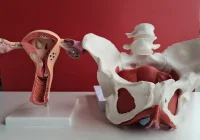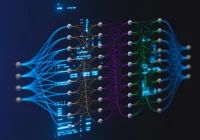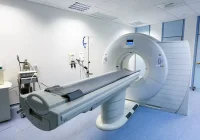Lung cancer is a leading cause of cancer mortality, yet detecting disease earlier can alter outcomes. Evidence indicates that low-dose computed tomography reduces mortality in high-risk groups, with a greater benefit reported for women. Recent European recommendations set out who should be invited, how scans should be acquired and read, and which nodules warrant action. The guidance also emphasises radiation safety, structured reporting, cautious handling of incidental findings and the supportive role of artificial intelligence for detection and volumetry. The aim is to maximise benefit while limiting unnecessary follow-up within organised screening pathways.
Who to Screen and When
Eligibility centres on current and former smokers defined by age and smoking exposure, typically between 50–55 and 74–75 years with at least 20 pack-years. Screening for non-smokers is not recommended. While many programmes exclude people who quit more than 10–15 years ago, ageing effects on risk are under discussion. Participation is influenced by perceived personal risk, underscoring the need for clear invitations.
Must Read: Improving Multi-Lesion Detection in Lung Cancer CT Scans
Intervals after a negative scan can extend beyond annual recall, with biennial screening considered acceptable in that setting. Longer intervals raise the risk of interval cancers, so ongoing work explores personalised strategies. Biomarkers in blood, exhaled air or sputum remain investigational and are not validated for first-line selection. If costs are acceptable, future use may combine biomarkers with CT to improve specificity, rather than replace imaging.
How to Scan and Read
Thin-slice volumetric acquisitions at low dose are essential. Multidetector systems with at least 32 rows and fast rotation enable full chest coverage within a single inspiration. Reconstructions of 1.0 mm or less are advised, with a lung-focused field of view. Dose optimisation targets an effective dose below 1 mSv, supported by tube current modulation, organ dose modulation, and prefiltration. Suggested CT dose index volumes are about 0.4 mGy for participants under 50 kg, 0.8 mGy for 50–80 kg, and 1.6 mGy for over 80 kg. Iterative or deep learning reconstruction helps reduce noise, and parameters should be kept constant for follow-up of indeterminate nodules. Ultra-low-dose protocols approximating chest radiography require prospective validation in screening.
Reading should be performed by trained radiologists. Visual review is complemented by thin-slab axial images and 10–15 mm maximum intensity projections to improve solid nodule detection. Volumetry is recommended for solid nodules because it provides more reproducible measurements than diameters, whereas reliability for subsolid nodules is less certain. Artificial intelligence, available with regulatory clearance in Europe, can aid detection, volumetry, characterisation and malignancy risk estimation. Performance can be comparable or slightly inferior to experienced readers, and further validation is needed to define whether AI is best used as a second or concurrent reader. Structured reporting is encouraged to standardise acquisition details, nodule description, growth assessment, risk linkage and actions, as well as to support audit and quality improvement. Templates include guidance on extranodular findings and suggested work-up.
Managing Nodules and Incidental Findings
Management balances sensitivity with avoidance of over-investigation. High-risk solid nodules at baseline include those with volume at least 500 mm³ or suspicious morphology such as spiculation, pleural indentation, bubble-like lucencies, thick-walled cavitation or complex cystic features. These warrant multidisciplinary work-up. Where volumetry is unavailable, a 10 mm maximum diameter threshold is used. Baseline solid nodules under 100 mm³ are negative. Nodules of 100–250 mm³ are re-evaluated at 6 months and 250–500 mm³ at 3 months, with referral if growth corresponds to a short volume doubling time. At annual follow-up, significant growth is indicated by a volume doubling time under 500 days or a diameter increase over 1.5 mm when volumetry is not feasible. New nodules are often inflammatory and may resolve, though short-term reassessment is advised for those 30 mm³ or larger.
Subsolid nodules, including pure ground-glass and part-solid types, tend to be indolent and are a source of overdiagnosis. A conservative approach is recommended. Surveillance focuses on changes in the solid component or suspicious morphology, including bubble-like lucencies. Persisting subsolid nodules under 3 cm with solid components under 6 mm are negative unless morphology is concerning. Large solid components at baseline warrant short-term reassessment and are usually considered positive unless they resolve. Long-term surveillance can limit unnecessary resections, with clinically relevant cancers often arising elsewhere rather than within monitored subsolid lesions.
Benign mimics are common. Typical intrapulmonary lymph nodes should not prompt investigation, characterised by small size, proximity to the pleura, location below the carina, sharp margins and round, oval or polygonal shapes. Perifissural opacities often remain under 100 mm³ and can fluctuate without consequence. Fat-containing nodules consistent with hamartoma can be recognised with correct attenuation measurement on mediastinal settings, and central calcifications may suggest benignity, although calcification can also be present in malignancy.
Incidental findings are frequent but often benign. Systematic evaluation of partially imaged organs and the breast is not recommended due to variability and medicolegal concerns. Very suspicious findings should be flagged by radiologist judgement. Severe coronary artery calcification may merit inclusion, with simple ordinal scoring approaches proposed for risk stratification. Programmes are advised to limit incidental findings to preserve cost-effectiveness, while exploring evidence-based methods, including AI, to improve accuracy and value.
European recommendations support targeted, quality-assured screening that prioritises low radiation dose, trained reading supplemented by volumetry and AI and measured escalation based on nodule size, growth and morphology. High-risk solid nodules prompt early diagnostic work-up, small solid nodules undergo short-interval reassessment, and most subsolid nodules are managed with careful surveillance to minimise overtreatment. Structured reporting and restrained handling of incidental findings promote consistency and cost-effectiveness, offering clinicians and programme leaders a clear framework to deliver benefit while limiting harm.
Source: European Radiology
Image Credit: iStock
References:
Revel M P, Biederer J, Nair A et al. (2025) ESR Essentials: lung cancer screening with low-dose CT—practice recommendations by the European Society of Thoracic Imaging. European Radiology: In Press.










